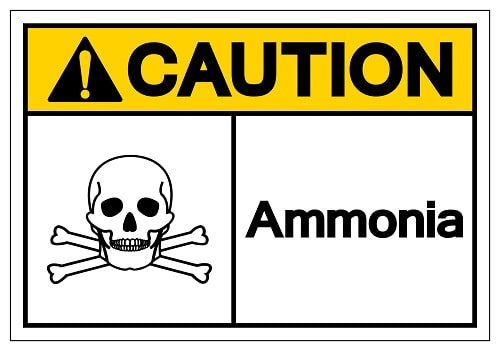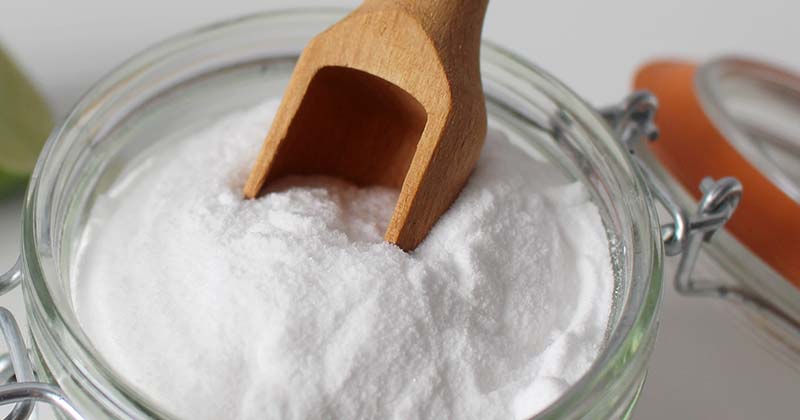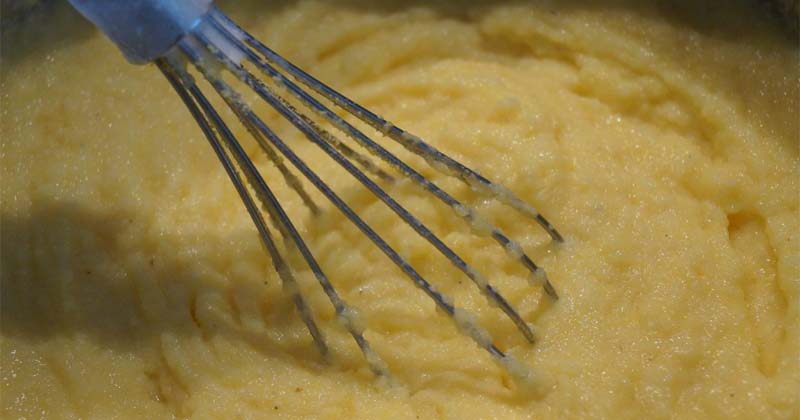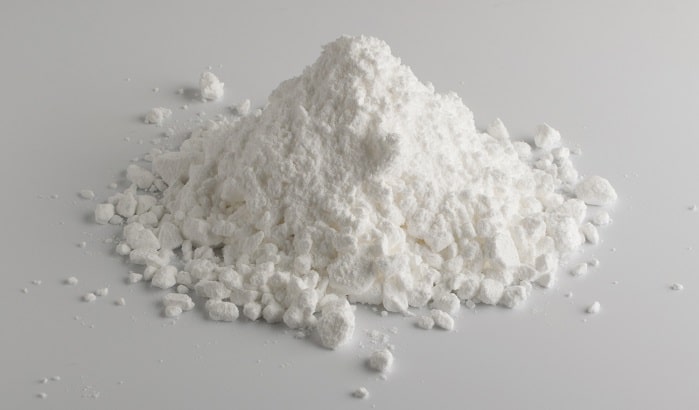Although there are humane ways of repelling and removing rats, poison is often the only way to eradicate the problem.
The following recipes use everyday household products as the bait to entice the rat and the poison that will eventually kill it.
Note: Many of these substances are as appealing to pets and small children as they are to rodents, so make sure you distribute your poison carefully and keep it out of reach.
#1 Ammonia

Ammonia smells terrible even to humans, so you can imagine how repulsive it is to a rat with a more highly developed sense of smell.
High concentrations of ammonia are potentially fatal to rodents. One study found that rats exposed to consistent levels of ammonia were liable to develop a potentially life-threatening respiratory disease known as murine respiratory mycoplasmosis (MRM).
To rats, ammonia smells similar to the urine of their natural predators, so they will automatically avoid it. If you want to kill a rat with ammonia, you must expose it to high concentrations in a closed area.
Pouring liquid ammonia into any holes you see the rats using is one way of dealing with your rodent problem.
Another is to mix between 2 and 2½ cups of ammonia with 100 to 200ml of water and 2 to 3 spoonfuls of detergent.
Place this mixture in areas where you commonly see rats entering your home, and you should notice an almost immediate reduction in rodent activity.
#2 Onions

Rats don’t include onions as part of their standard diet, and they generally avoid them at all costs, even when cooked. The mere smell of raw onions irritates a rat’s eyes and nose just as it does ours. If eaten, “raw onion can cause severe anemia” in rats.
Rats are allergic to the sulfur in raw onions, and when they consume it, it limits the amount of oxygen a rat can absorb, draining the cells and causing a slow and painful death.
Rats are intelligent creatures and, as such, are unwilling to go anywhere near raw onions. However, you might be able to trick them into eating these toxic vegetables by mixing some finely chopped onion in with some irresistible bait, like minced meat.
#3 Baking Soda

Due to its versatility, most homes have baking soda in the kitchen. As well as being used as a cleaning, anti-acid, and leavening agent, baking soda is a surprisingly effective rat poison.
Rodents can’t expel carbon dioxide as humans can, so when the bicarbonate in the baking soda reacts with the acids in the rodent’s stomach and produces carbon dioxide, the gas builds up inside the digestive system. Eventually, it will cause a blockage or rupture and kill the rat.
Rats don’t naturally sit down to a meal of baking soda, so you’ll need to combine it with something appetizing to spark their interest. You can use any of the following as bait for your baking soda poison:
- Peanut butter – mix with baking soda and then roll into balls and place around your home
- Flour and sugar – mix equal parts of sugar, flour, and baking soda. Leave in a shallow dish.
- Cocoa powder – chocolate is difficult for anyone to resist, including mice. Combine equal amounts of cocoa powder and baking soda, and then add a little sugar to sweeten the deal.
While baking soda is safe for children and pets, it’s not particularly humane. Few poisons are, I suppose.
Larger rats also need to consume a considerable amount of baking soda before it kills them, which means you could witness ailing rats stumbling around your house.
#4 Instant Mashed Potato Flakes

I’ve always maintained that instant mashed potato is closer to poison than food, and it seems that for rats, at least, this is true.
This non-toxic approach to poisoning rats is one the safest, especially if you have pets. Few cats or dogs will tuck into a dish of instant mashed potato flakes, but rats seem more than happy to gorge themselves on it.
Once they’ve eaten their fill, they become incredibly thirsty. As they drink, the water causes the mashed potato flakes to expand in the rat’s stomach, killing them instantly.
Sprinkling a sachet of artificial sweetener over the mashed potato flakes makes them even more appealing to rats and will help ensure they eat enough of the substance to seal their fate.
#5 Cement Mix
While this isn’t something everyone has in their kitchen, it is readily available and very effective, assuming you can persuade a rat to eat it. If a rat does ingest this, it will quickly harden as it comes into contact with the animal’s digestive juices.
For the cement mix to work effectively, mix the powder with something tempting, like peanut butter or cocoa powder. Peanut butter works well as it makes the mixture malleable so that you can roll it into balls and place it strategically around the house.
As cats and dogs are as keen on peanut butter as the rest of us, this homemade rat poison is not recommended if you have pets.
#6 Plaster of Paris

If you can’t get your hands on cement mix, plaster of Paris will work just as well. An alternative approach is to combine plaster of Paris or cement mix with cornflour and then add milk or water to form a dough. Knead for a minute before rolling into balls and placing them around the house.
The cement mix and plaster of Paris will harden after a few days of exposure to the atmosphere and must be replaced regularly.
#7 Boric Acid
According to some, boric acid “is one of the best and most effective poison recipes out there.” Others disagree, saying it causes only “developmental toxicity.” In other words, while it can harm a rodent’s unborn fetuses, it won’t eliminate your current rat problem.
You can still use it to dispose of cockroaches and ants, but it’s not worth getting if the rat is your only enemy.
#8 Vitamin D-3
While Vitamin D may be essential for human health, it can be fatal to other animals, including rodents. The active ingredient, cholecalciferol, is found in many vitamin D-3 supplements and rodent poisons.
Vitamin D-3 is a fast-acting poison that causes such high calcium and phosphorus levels in the rat’s body that it results in kidney failure, heart problems, and bleeding. It’s so effective that it’s been turned into a spray to tackle New Zealand’s “super rats.”
I found a random fact that claimed you would need around 100,000 IU of vitamin D3 to have a 50% chance of killing an 80 oz rat. As most rodents we get in our homes weigh between 0.6 to 17 oz, a single 5000 IU tablet should be enough to make a decent dent in the population.
Crush up the tablet, empty the capsule’s contents, and then mix it with some peanut butter. Place small balls around the house and wait for a couple of days.
It’s tempting to think of vitamins as relatively benign substances, but vitamin D-3 is toxic to dogs, cats, and children, so be sure you keep it out of reach.
#9 Black Pepper
Black pepper contains high concentrations of the chemical piperine. This chemical has a toxicity of 514mg/kg, making it more potent than some homemade rat poisons, but brings it nowhere near the toxicity levels of commercial poisons.
Although black pepper is toxic enough to kill a rat, it’s not necessarily effective as a poison.
Rats don’t wolf down their meals like some dogs do. They nibble at new food sources, testing them thoroughly before tucking in. As a result, a rat will stop eating black pepper the moment it experiences discomfort. This will occur long before it’s consumed a fatal dose.
Sprinkling some black pepper around areas where you commonly see rats may deter them, but it’s not likely to eradicate the problem.
Conclusion
Not all these recipes will eradicate your nuisance rat population, but some, like instant mashed potato flakes, are safe and effective.
If you decide to poison rats, you may have to deal with some unwanted bodies. As handling dead rats puts you at risk of contracting a disease from the animal, this is potentially dangerous.
Poisoning may be effective, but it’s not pleasant for you or the rat. If you want to find a more humane way of dealing with a rat invasion, try some of the tips I explored when figuring out how to rodent-proof my food storage.



Has anyone made their own version of RatX ?
it’s corn gluten meal mixed with salt.
it dehydrates the rats & they die in a few days.
It is not available in California.
it is available in Calif, but some vendors won’t send it here.
I just set it out & there are no results yet.
Catching rats outdoors can be difficult, they roam around and don’t always come back to the same spot very often. Using snap or jaw traps, I only catch one every few weeks.
I have tried ratx and mousex. They ignore it plain and lick peanut butter off it. I have ground it up and added pb and cocoa powder and that makes them eat it
instant mashed potatoes may be more humane than poisons, but I doubt it kills them instantly, even if the stomach ruptures.
Would like to know the answer about the secondary poisoning situation with baking soda or other home made “non toxic” poisons for rats. One of my most urgent concerns is the way rat poisons killing rodents also kill whatever eats the rodent. Having seen one in my yard seeking water and lethargic, I knew it was poisoned and would be found dead soon. It was- luckily before my pet found it. I know that raptors I want around can be poisoned by eating things like lead and the poisons that cause hemorrhagic death in rodents- which is why I don’t buy the poisons. Does the baking soda method also harm or kill raptors, or pets- like cats or even dog? Something to think about- maybe traps are best?
Interesting ideas. If a cat or another wild animal eat their dead bodies, will it kill them or make them sick?
I’m dealing with roof rats that have moved into our hood, I’ve been here since the 70’s and now this. I have chickens and things so I’m a target property for these rats. I have tried all of the baking soda recipes including the plaster of Paris one, and the rats don’t care. My rats don’t like peanut butter but they love apples and sweet potatoes. You have to find what they like to eat if you want to them to eat your poison. That said I’ve mixed D3 oil into baked sweet potato and made balls out of them and they take them and eat them but I haven’t had dead rats afterwards which I should’ve started seeing after about 4 days of consumption. I’m going to switch brands of D3 and I will also try grinding up pills. But if you get desperate – I’ve killed at least 50 roof rats, all sizes, in the last 2 weeks with this – JT Eaton Bait Block Apple Flavor (I also tried a couple other poison baits but this is the one that’s actually working). I chop them into small squares with a screwdriver that they can easily carry off and I put them out where I see and hear rats and come back to check in less than an hour and most if not all have been taken. I still have some rats left to go but it’s a whole lot quieter around here at night and I’m hardly seeing any rats now. But if I don’t get them all the population will just start again and I’ll have to start over and the new ones might be wise to this poison and then I’ll be screwed. So go in hard and fast. These things are smart and seem to communicate what to avoid to each other. Wear gloves to handle the poison bait and wear gloves to handle the dead rats, carry by the tail. I’ve been burying them in mass graves but that’s easy for me to do on my property, it’s all sand. I’ll have from 3 to 8 dead rats in a day. All very unpleasant but it’s a lot more unpleasant having these rats running around everywhere multiplying and chasing off the natives. There’s something called BioRat made in Cuba that would be real nice if we could get it here but we can’t, non-toxic – but we’re still punishing Cuba from the 1960’s for some reason. And New Zealand made a contraption called the PiedPiper that auto sprays D3 onto a rat passing through that they say will then kill it instantly by absorbing it through their skin. Can’t find where I can get that either. Both have had great success eliminating rat problems. The US needs to let us get anything that WORKS because this is a big problem, big like feral pigs spreading around the country but feral pigs aren’t invading and destroying your house. Invasive Rats are.
We have been using equal parts baking soda, honey cornmeal mix with sprinkle of sugar. Put it in a plastic storage container with hole in it. It has been week and half the little ones seem to be gone just few big ones left